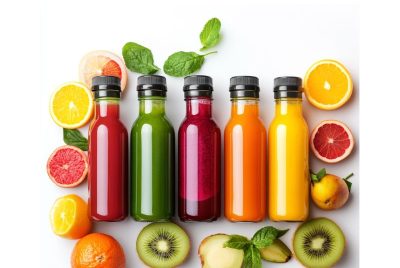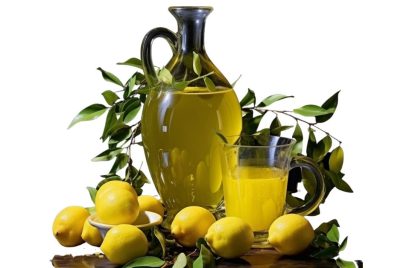What to Eat After a Juice Cleanse
What to eat after a juice cleanse? As someone who is passionate about juicing for health, I understand the importance of replenishing the body with nourishing foods after completing a juice cleanse. Juice cleanses provide a fantastic way to detoxify and reset our systems, but it’s equally important to transition back to a balanced diet to maintain optimal health. In this article, I will provide helpful suggestions and reasons for the foods to consume after a juice cleanse, ensuring you make the most of your detoxification journey.
Understanding Juice Cleanses
Juice cleanses involve consuming only freshly pressed juices for a designated period, usually ranging from a few days to a week. These cleanses are designed to flood the body with vital nutrients while giving the digestive system a break. However, after completing a juice cleanse, it’s crucial to reintroduce solid foods gradually and mindfully.
Benefits of Juice Cleansing
Before diving into post-juice cleanse considerations, let’s briefly explore the benefits of juice cleansing. Juice cleanses can enhance nutrient absorption, support weight loss, boost energy levels, improve digestion, and promote glowing skin. They also provide a powerful way to increase fruit and vegetable intake, ensuring a rich supply of essential vitamins, minerals, and antioxidants.
Post-Juice Cleanse Considerations
After completing a juice cleanse, it’s essential to be mindful of how you transition back to a regular diet. Abruptly indulging in heavy, processed foods may shock your system and negate the benefits gained during the cleanse. Instead, opt for a gradual approach to reintroduce solid foods, allowing your body to adjust and prevent digestive discomfort.
Importance of Transitioning
Transitioning from a juice cleanse to regular eating habits gradually is crucial. Start by incorporating simple and easily digestible foods, gradually increasing the complexity and variety over time. This approach helps your body readjust to solid foods and ensures a smooth transition while maintaining the detoxifying effects of the cleanse.
Nutrient-Rich Foods to Incorporate
When transitioning back to solid foods, prioritize nutrient-rich options. Fresh fruits and vegetables should form the foundation of your meals, providing an abundance of vitamins, minerals, and fiber. Leafy greens, berries, cruciferous vegetables, and citrus fruits are excellent choices. Aim for a colorful plate to ensure a diverse nutrient profile.
Hydration and Rehydration
Proper hydration is vital during and after a juice cleanse. In addition to consuming water, incorporate hydrating foods into your diet. Cucumber, watermelon, celery, and herbal teas can help replenish lost fluids and maintain optimal hydration levels. Staying hydrated supports digestion, detoxification, and overall well-being.
Incorporating Whole Grains
Whole grains are an excellent addition to your post-juice cleanse diet. They provide sustained energy, fiber, and essential nutrients. Opt for options like quinoa, brown rice, whole wheat bread, and oats. These grains provide a healthy source of carbohydrates that complement the nutrient-dense foods in your meals.
Including Lean Proteins
Protein is a crucial macronutrient necessary for muscle repair and growth. After a juice cleanse, incorporate lean protein sources such as skinless poultry, fish, beans, lentils, and tofu. These options offer essential amino acids and can help you feel satiated while providing a well-rounded balance to your diet.
Boosting Fruit and Vegetable Intake
Juice cleanses often lead to increased fruit and vegetable consumption, and it’s essential to continue this habit after completing the cleanse. Fresh produce offers an array of vitamins, minerals, and antioxidants that support overall health. Experiment with different combinations and preparations to keep your meals exciting and satisfying.
Healthy Fats and Oils
Including healthy fats and oils in your post-juice cleanse diet is crucial for various bodily functions. Avocado, nuts, seeds, olive oil, and coconut oil are excellent sources of healthy fats. These fats provide energy, promote brain health, support hormone production, and aid nutrient absorption. However, remember to consume them in moderation due to their higher calorie content.
Fermented Foods and Probiotics
To support gut health and aid digestion, incorporate fermented foods and probiotics into your diet. Yogurt, kefir, sauerkraut, kimchi, and kombucha are excellent sources of beneficial bacteria that promote a healthy gut microbiome. These foods can help maintain a balanced digestive system and support overall well-being.
Mindful Eating Habits
After completing a juice cleanse, it’s essential to adopt mindful eating habits. Slow down, savor your meals, and listen to your body’s hunger and fullness cues. Chew your food thoroughly to aid digestion and appreciate the flavors. Mindful eating helps you reconnect with your body, fostering a healthier relationship with food.
Exercise and Physical Activity
Alongside nourishing your body with the right foods, incorporating regular exercise and physical activity into your routine is crucial. Exercise supports overall well-being, improves cardiovascular health, boosts mood, and aids in weight management. Choose activities you enjoy and aim for a mix of cardio, strength training, and flexibility exercises.
Conclusion
Transitioning from a juice cleanse back to a regular diet is a delicate process that requires careful consideration. By incorporating nutrient-rich foods, hydrating adequately, and following a gradual approach, you can maintain the benefits of the cleanse while nourishing your body with the essential nutrients it needs. Remember to adopt mindful eating habits and prioritize regular physical activity for long-term health and well-being.
FAQs
1. Can I eat anything I want after a juice cleanse? After a juice cleanse, it’s best to transition back to solid foods gradually. Incorporate nutrient-rich options such as fruits, vegetables, whole grains, lean proteins, and healthy fats. Avoid heavy, processed foods to prevent digestive discomfort.
2. How long should I wait before eating solid food after a juice cleanse? The duration of your juice cleanse and your body’s response should guide you. It’s generally recommended to start with easily digestible foods like soups and smoothies, gradually reintroducing solid foods over a few days.
3. Can I continue to have fresh juices after the cleanse? Absolutely! Fresh juices can still be part of your regular diet after a cleanse. However, it’s important to prioritize whole foods and ensure a balanced intake of macronutrients and essential nutrients.
4. Are there any foods I should avoid after a juice cleanse? While it’s important to reintroduce solid foods gradually, there are no specific foods you need to avoid after a juice cleanse. However, it’s best to limit processed foods, added sugars, and excessive salt intake for overall health.
5. Can I go back to my previous eating habits after a juice cleanse? Ideally, a juice cleanse serves as a reset for healthier eating habits. Take this opportunity to evaluate your
Here are two reputable sources that provide scientific insights and commentaries related to the content of this post:
- “Detox Diets for Toxin Elimination and Weight Management: A Critical Review of the Evidence” – This peer-reviewed study published in the Journal of Human Nutrition and Dietetics critically examines detox diets, including juice cleanses, and their effects on weight management and toxin elimination.
- “What’s being cleansed in a detox cleanse?“ – This article from the Harvard T.H. Chan School of Public Health provides a critical review of juice cleanses, their claimed benefits, potential risks, and what to consider before starting a cleanse.




